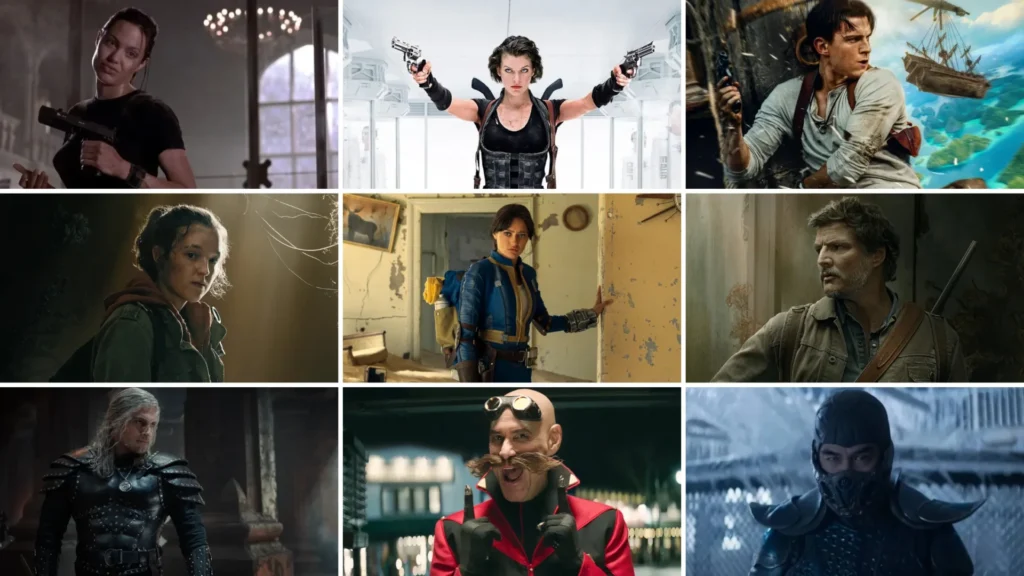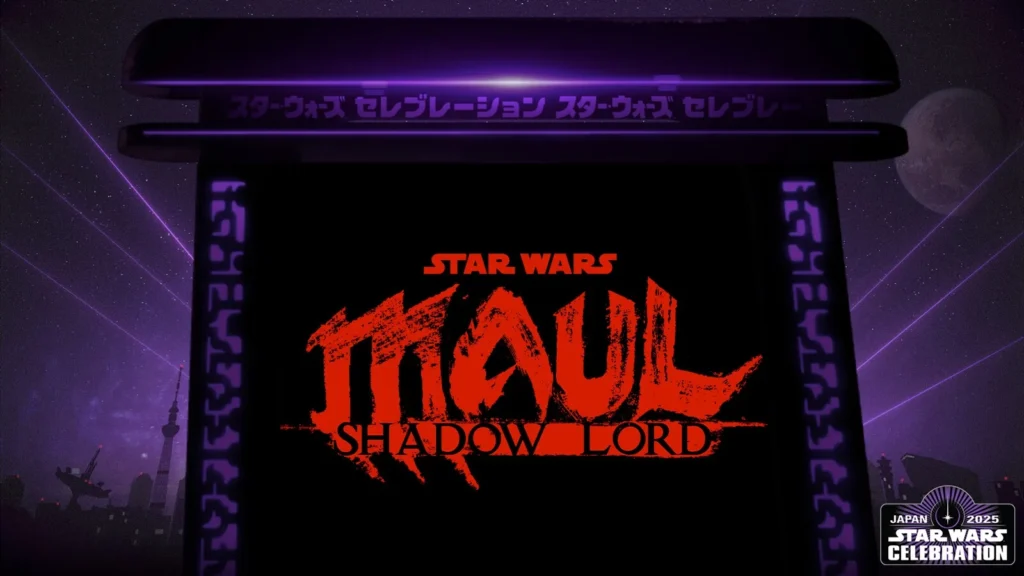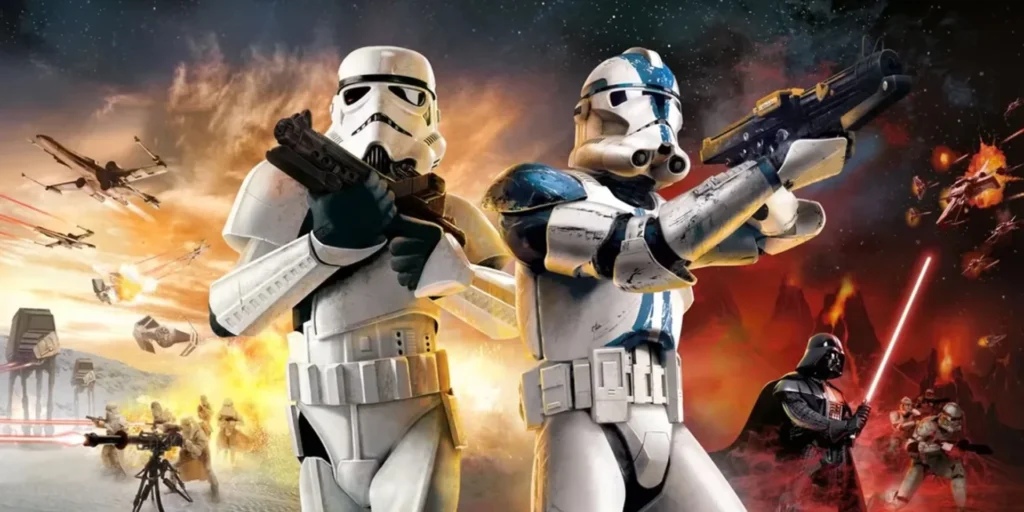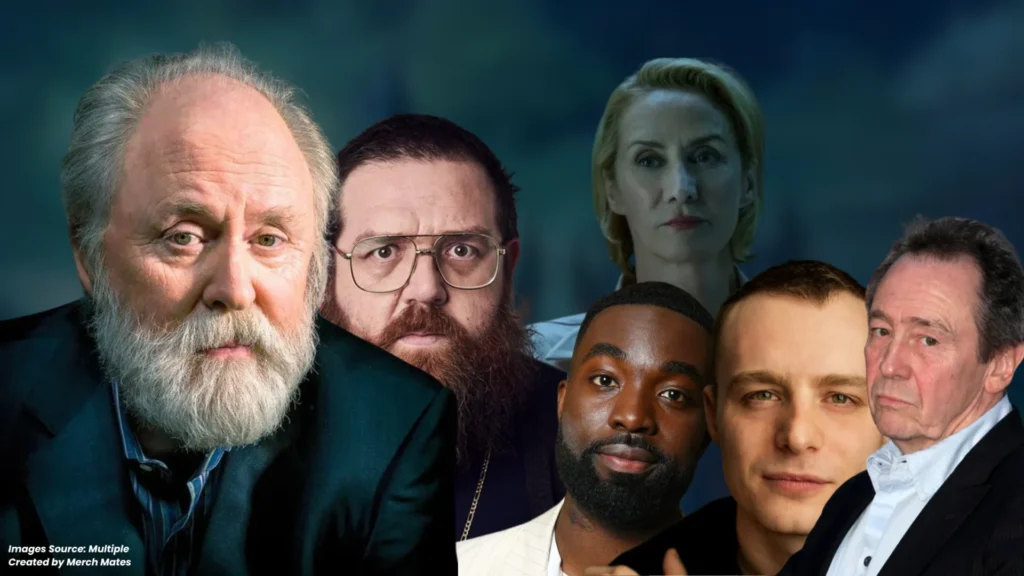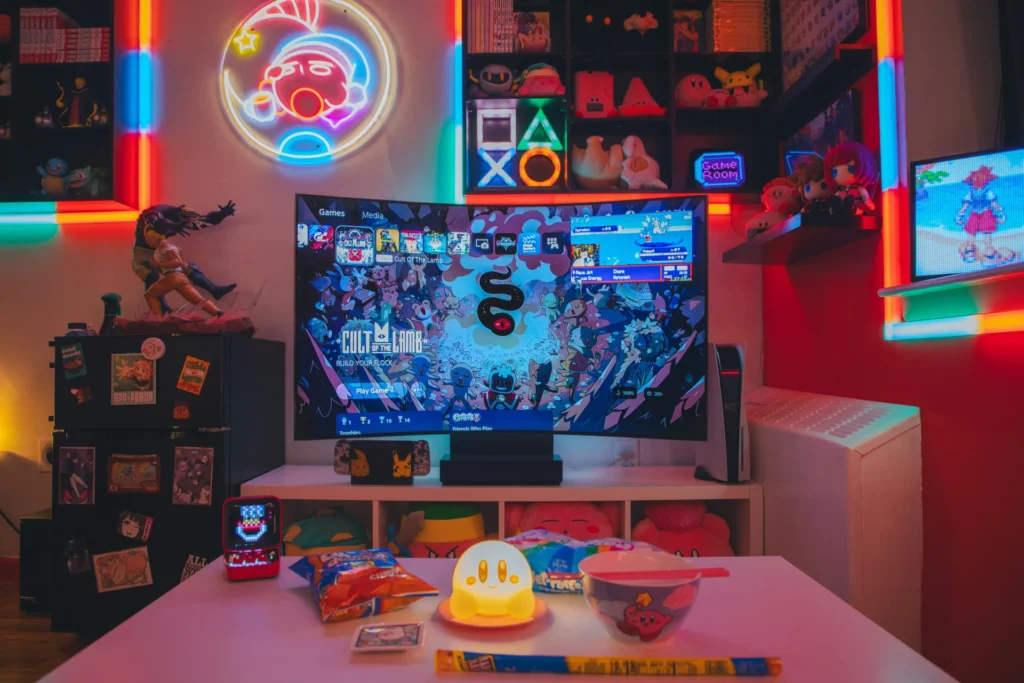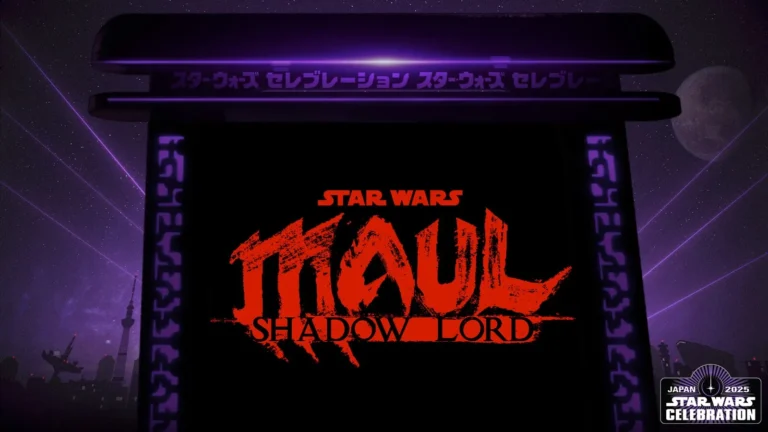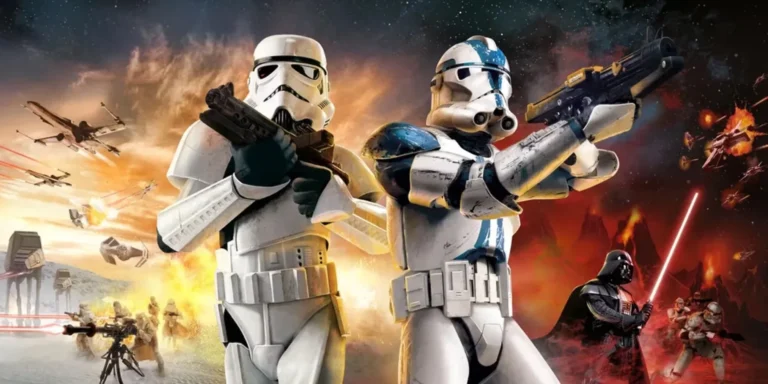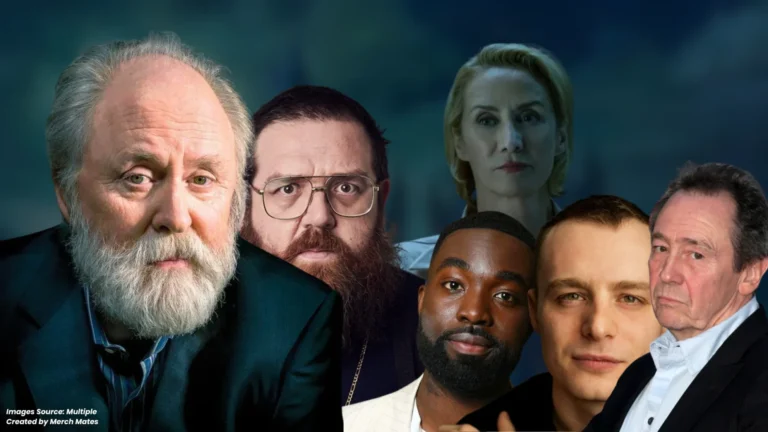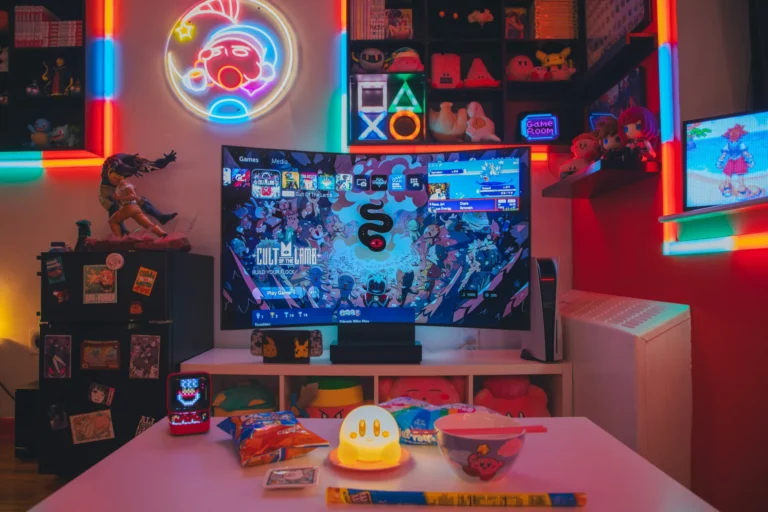The infamous “video game movie curse” haunted Hollywood since Super Mario Bros. stumbled onto screens in 1993. But guess what? That curse is finally shattering.
Detective Pikachu changed everything in 2019. The first video game movie to earn that coveted “Fresh” rating on Rotten Tomatoes – and suddenly the floodgates opened. Sonic the Hedgehog raced in next, proving these adaptations could actually work. Jim Carrey’s scene-stealing Dr. Robotnik had us cackling. Idris Elba’s commanding Knuckles made us believers. These weren’t just cash grabs anymore – they were genuinely good movies.
Look, I’ve watched countless attempts at bringing games to screen. Most left me wincing. But these 17 performances? They’re different. Each one shows what happens when Video Game Castings hit the mark – when casting directors nail it and find that perfect actor who just gets it. The kind of performance that makes you forget you’re watching a video game character at all.
Ready to see who made the cut? Let’s dive into the performances that finally broke the curse.
Pedro Pascal as Joel (The Last of Us)
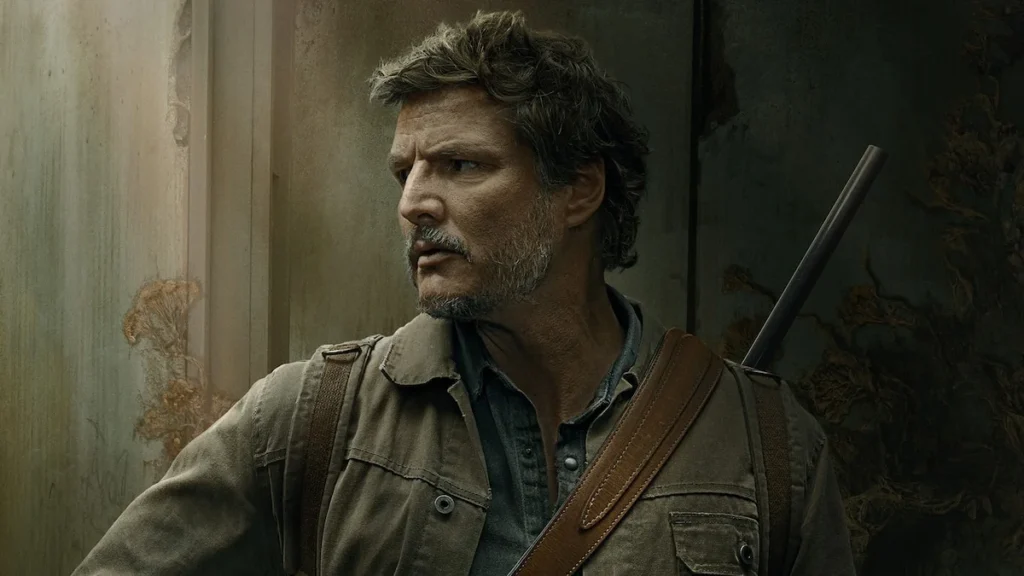
Pedro Pascal’s Joel Miller haunts me. HBO’s The Last of Us needed more than just another gruff survivor – they needed someone who could make us feel the weight of twenty years of trauma. Pascal didn’t just step into those shoes. He lived in them.
Why Pascal Was Perfect for Joel
The casting story reads like fate. “I sent it on a Friday. Saturday morning I get a call: ‘He loves it. He wants to get a Zoom,'” recalled co-creator Craig Mazin. Sure, Matthew McConaughey’s name floated around briefly, but Pascal? He brought something raw and wounded to Joel. The Chilean actor didn’t just play the pain – he embodied it. Bad knees. Hearing loss in one ear. Every injury lingering across episodes like unwanted memories.
Capturing Joel’s Emotional Complexity
Here’s what breaks my heart – during filming, director Jasmila Žbanić caught Pascal crying off-camera. Not for his own scene. No. He was crying while feeding lines to his scene partner, pouring everything into making their moment real.
Season 2 hit him even harder. “My mindset was grateful to be back and yet…this experience, more than any other I’ve had, is hard for me to separate what the characters are going through and how it makes me feel, in a way that isn’t very healthy”. That’s the thing about great performances – sometimes they leave scars.
The Last of Us Adaptation Success
Critics couldn’t stop raving. “Best adaptation of a video game” they said. The show dominated HBO’s ratings, and Pascal’s Emmy nomination for Outstanding Lead Actor? Totally deserved.
Fan Reception to Pascal’s Performance
That interrogation scene, though. One fan nailed it: “Pedro f*king killed the interrogation scene. His acting is so f*king insane. Give him all the awards”. But you know what really gets me? Troy Baker – the original Joel – watching Pascal’s work and saying: “I am inspired by Pedro’s performance as Joel. I wish that I could go back and do some things different”. When the original actor wants to rewrite his own performance? That’s something special.
Bella Ramsey as Ellie (The Last of Us)

Finding the perfect Ellie Williams? Feels like searching for a unicorn in post-apocalyptic Boston. After 105 hopefuls tried capturing lightning in a bottle, Bella Ramsey walked in and rewrote everything we thought we knew about The Last of Us.
Ramsey’s Portrayal of Ellie’s Resilience
Craig Mazin didn’t need a fancy speech about it: “Bella is Ellie. The moment she read for the role, we knew. Her talent is unmatched”. Watching Ramsey shape-shift between Ellie’s razor-sharp wit and raw vulnerability feels like watching someone juggle fire while walking a tightrope. Den of Geek’s Bernard Boo wasn’t kidding when he called those scenes “utterly heartbreaking”. The Emmy and Golden Globe nominations? Just icing on an already perfect cake.
But here’s what really gets me – the physical transformation. Fifteen inches of hair? Gone. American accent? Mastered. Chest binder for 90% of filming just to stay focused? That’s not just dedication – that’s becoming someone else entirely.
Chemistry with Pascal
Here’s a wild thing – Ramsey and Pascal never did a chemistry read together. HBO boss Casey Bloys must have been sweating bullets: “If those two don’t work, the show doesn’t work”. But sometimes magic just happens. “Our friendship and relationship progressed as Joel and Ellie’s did,” Ramsey shared. Watching them on screen feels like watching two puzzle pieces finally finding their match in the chaos.
Bringing the Game Character to Life
The showrunners had this brilliant, terrifying idea – keep Ramsey away from the game. “After my first audition, they asked me, ‘have you played it?’ And I said ‘nope,’ and they said, ‘keep it that way'”. Turns out, sometimes not knowing the destination helps you forge a better path.
Sure, the internet did its thing at first. Ramsey’s confession to The New York Times still hits hard: “I saw the comments, and for a moment, I thought, ‘Maybe they’re right.’ But then I reminded myself that Ellie is more than her looks—she’s her heart, her pain, her resilience”. By the time the credits rolled on episode one, those voices got real quiet. Funny how that works, isn’t it?
Henry Cavill as Geralt of Rivia (The Witcher)
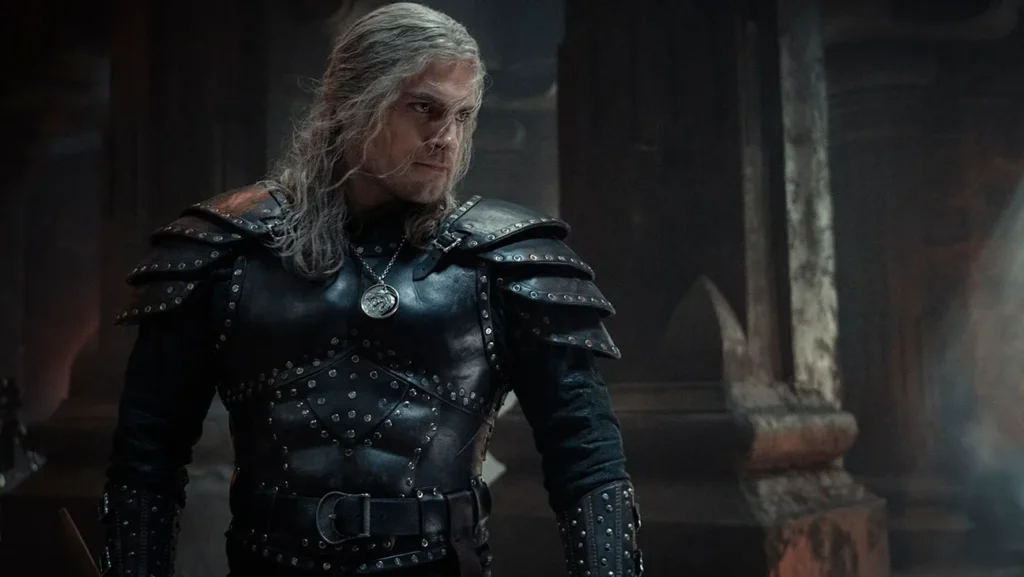
Look, plenty of actors say they love the source material. But Henry Cavill? He spent lockdown replaying The Witcher 3 on death march difficulty. That’s not research – that’s devotion. No wonder Netflix’s The Witcher feels different. Author Andrzej Sapkowski said it perfectly: “Just as Viggo Mortensen gave his face to Aragorn, so Henry gave his to Geralt and it shall be forever so”.
Cavill’s Dedication to the Source Material
The man became a walking “Witcher bible” on set. While most actors might skim the cliff notes, Cavill lived and breathed this world long before casting. His co-stars couldn’t help but notice: “He’s such a fan of the games and of the books, and I think that his representation of Geralt is faultless”. Sometimes the best casting is simply finding someone who already lives in that universe.
Physical Transformation
The physical stuff? Brutal. Working with strength coach Dave Rienzi, Cavill pushed through fasted cardio sessions and specialised workouts just to handle the sword work. But here’s the part that scares me – for shirtless scenes, he dehydrated himself so severely over four days that he could “smell water nearby”. Called it “the best shape of my life”. Sure, Henry. If by “best” you mean “most terrifyingly dedicated.”
Capturing Geralt’s Stoic Nature
Showrunner Lauren Hissrich figured something out quick – Cavill didn’t need words. “Henry brings such a depth and layered performance to Geralt that we don’t need him to tell us everything he’s feeling”. A grunt here. A look there. That’s all it took. Somehow he walked this impossible line between stone-cold monster hunter and someone you’d trust with your life.
Impact on The Witcher’s Popularity
When Cavill announced his departure, 319,000 fans signed a petition begging him to stay. Critics called it “the best of Cavill’s career”, praising how he balanced being “half dead-eyed video game avatar, half glistening live-action pugilist”. The thing is, sometimes perfect casting isn’t about finding the best actor – it’s about finding the one person who already has that character living in their soul.
Jim Carrey as Dr. Robotnik (Sonic Movies)
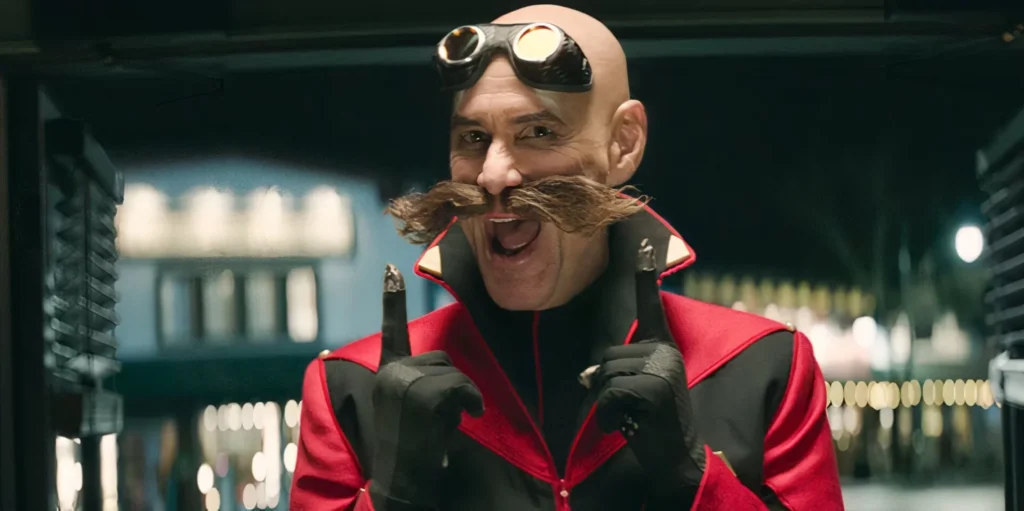
Some villains chew the scenery. Jim Carrey’s Dr. Robotnik? He devoured it whole, seasoned it with madness, and served it back with a side of pure genius. When he signed on for Sonic the Hedgehog, we didn’t just get another bad guy – we got lightning in a bottle wearing a magnificent moustache.
Carrey’s Comedic Approach to Robotnik
The magic started when Carrey saw Robotnik’s DNA in his past roles. That Riddler energy from Batman Forever – the neglect, the worthlessness, the desperate need to control everything. But this time? He cranked everything up to eleven, creating something that belongs in his hall of fame right next to The Mask.
“It was an opportunity to go back and do that over-the-top, absurd energy and still make him believable within the story,” Carrey explained. Somehow he walked this impossible tightrope – terrifying one moment, hilarious the next. Pure Carrey chaos, but with method to the madness.
Physical Comedy and Character Evolution
On set, they basically handed Carrey the keys to the kingdom. “I shoot for the adults, and I’ve got a smile in my heart for the kids,” he said. That freedom birthed pure gold – like that spontaneous dance number that would make Dick Van Dyke proud.
Robotnik’s evolution fascinated him. “Robotnik has not reached his apotheosis,” he teased after film one. That moustache? Just “the first manifestation of evil.” By the time we got full Eggman, Carrey had transformed a cartoon villain into something deliciously unhinged.
Reimagining a Video Game Villain
The best part? Carrey didn’t just copy-paste from the games. He rebuilt Robotnik from the ground up. “The moustache is an extension of his ego,” he explained, before adding – because he’s Jim Carrey – “I wanted it even bigger with seats on both sides for characters to go back and forth on it.”
That’s the thing about perfect casting. Sometimes you need someone who won’t just play the character – you need someone who’ll reinvent them entirely. Carrey didn’t just play Robotnik. He became him, twisted him, and created something entirely new. The games gave us the blueprint. Carrey gave us the masterpiece.
Ben Schwartz as Sonic (Voice)
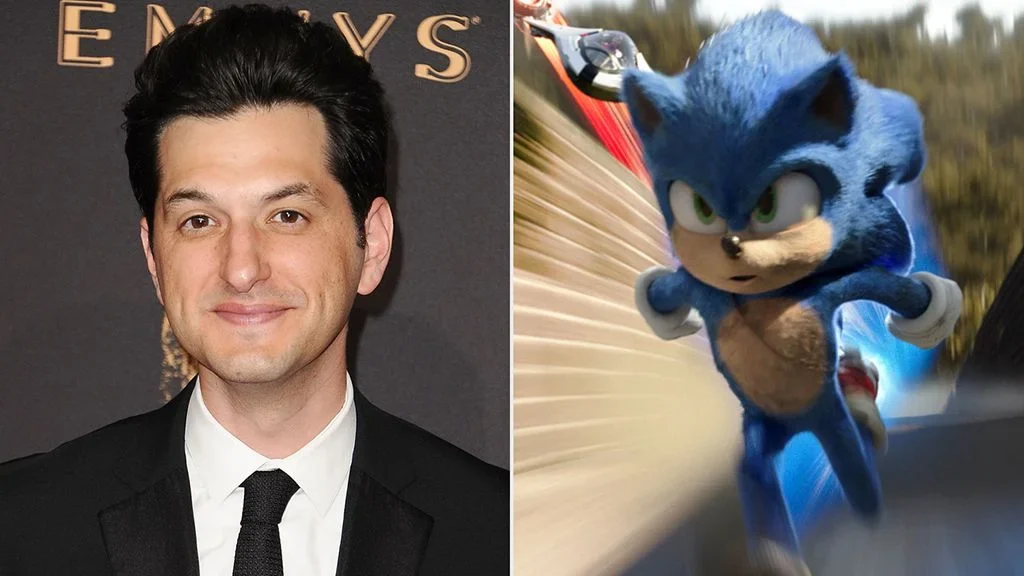
You know that feeling when something moves so fast you barely catch it? That’s Ben Schwartz’s Sonic – a blue blur of pure joy racing through every scene. Parks and Recreation’s Jean-Ralphio traded his swagger for super-speed, and suddenly Sonic felt more alive than ever.
Bringing Energy to the Blue Blur
“I wanted to play him like an energetic young kid who is just so excited to do things,” Schwartz explained. Picture this – a lonely hedgehog stuck in a cave, never talking to anyone, finally getting to share his thoughts. That’s the Sonic we got – words tumbling out faster than his feet could carry him.
The studio caught lightning during those first test readings. They saw Schwartz’s quick-fire comedy brain at work and basically handed him the keys to the kingdom. Smart move. Sometimes you need to let chaos run wild.
Modernizing an Iconic Character
Here’s what gets me – Schwartz grew up sneaking plays on his friends’ Sega Genesis. Called himself a “video game nerd” and meant it. “I think the pressure for me was like, I really want to make the fans proud and happy,” he admitted. That’s not just PR talk. That’s someone who knows what it means to love these games.
Remember that whole redesign drama? While everyone else panicked, Schwartz just smiled, called it “a whole wonderful breath of life to our movie.” The new look “fits really well with the performance I gave and in my head how this guy acts.” When you’re that confident in the character’s soul, the outside stuff doesn’t shake you.
Voice Acting Challenges
Picture this – Schwartz alone in a studio, face covered in motion capture dots, “tethered to something like The Matrix.” Not exactly the glamorous Hollywood life. But that’s what it took to make every “Gotta go fast!” feel real.
Started in 2020, still running strong through sequels and that Knuckles show. Funny how the fastest thing alive found his forever voice in a guy who just wanted to make his fellow fans happy.
Idris Elba as Knuckles (Voice)
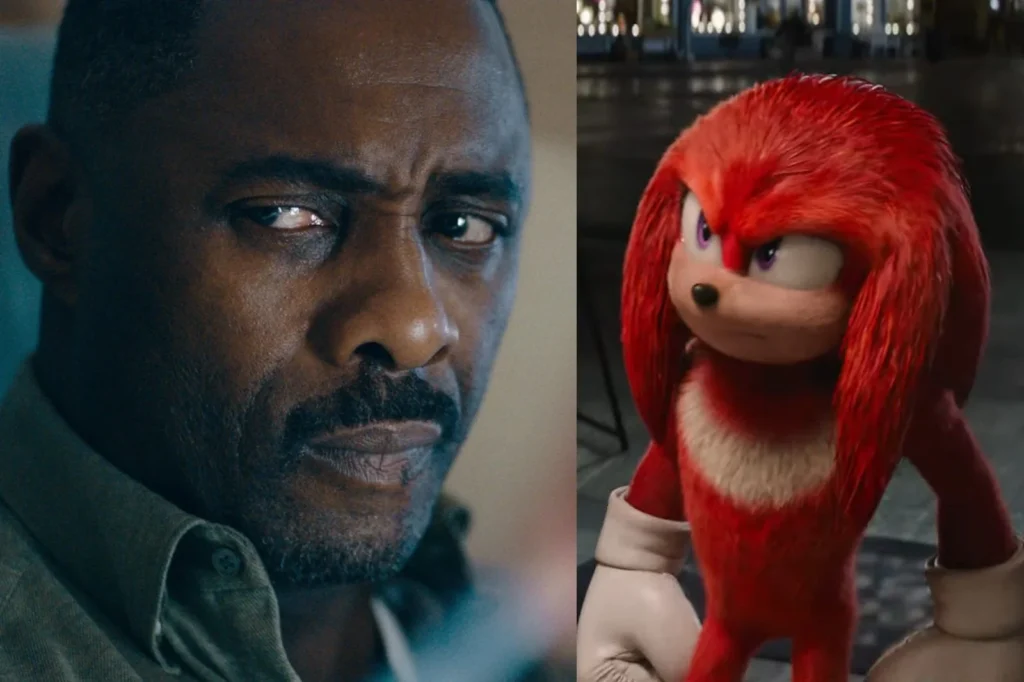
Sometimes perfect casting sounds exactly like you imagined, even when you didn’t know what you were imagining. Idris Elba’s Knuckles hits different – a voice carrying the weight of the last Echidna warrior with every growled line.
Elba’s Distinctive Voice Work
The search for Knuckles’ voice wasn’t simple. “The voice of Knuckles was a bit of a journey trying to understand what does this character sound like? Is he American? Is he English? Is he tribal?”. Elba didn’t just settle for his first take. “We decided to play with a few different voices… we got rid of [the first attempt] and then we ended up somewhere else”.
Most voice actors find their lane and stick to it. Not Elba. He came armed with “three options for his voice: the Knuckles voice, the deep one he uses while acting, or the everyday version”. That’s not just preparation – that’s respect for the craft.
Character Development in Sonic 2
Here’s what makes this special – Elba didn’t just voice Knuckles, he understood him. “Once Sonic sort of pulls the emotional layers back from Knuckles, we’re going to realise that he’s just like Sonic. He’s just another character who needs someone”. Under that tough exterior? A fully realised character searching for connection.
The journey from Sonic’s enemy to ally feels earned. Sure, he’s after the Master Emerald at first, but Robotnik’s betrayal changes everything. Elba’s voice carries every step of that evolution – from threatening warrior to someone learning to trust again.
Fan Reception to Knuckles
The fans? They lost their minds. “IDRIS ELBA SOUNDS SO GOOD AS KNUCKLES AAAAAAAA,” screamed one after the trailer dropped. Others loved how he made Knuckles “properly intimidating” while bringing that “more serious tone” the character needed.
Some fans saw even deeper meaning: “Idris Elba voicing Knuckles just solidifies the fact once again that Knuckles is black”. When they called it “objectively the best Knuckles voice” that “redefined the character”, it wasn’t just hype. It was recognition of something special – a voice actor who didn’t just play Knuckles, but understood his soul.
Angelina Jolie as Lara Croft (Tomb Raider)
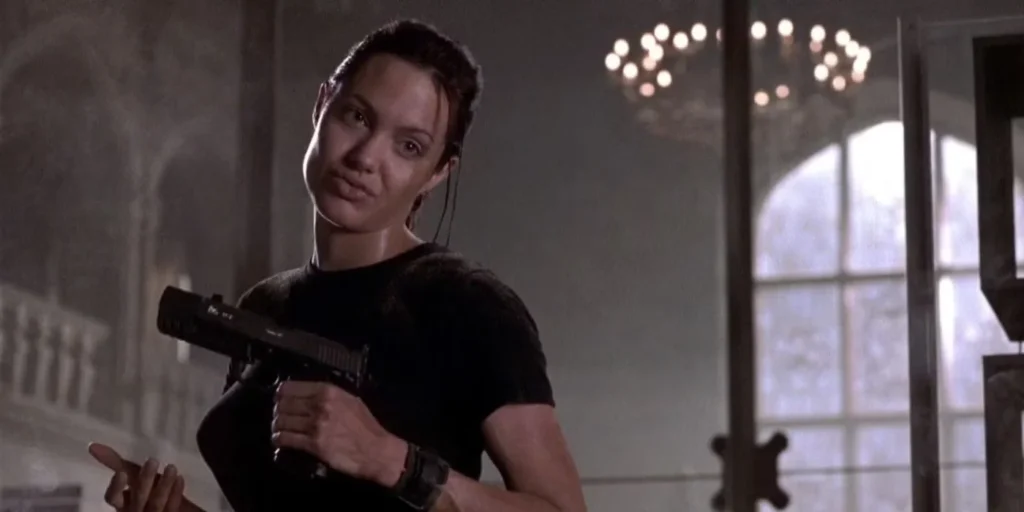
Back in 2001, something magical happened. Angelina Jolie stepped into Lara Croft’s boots, and suddenly those polygonal pixels became flesh and blood. This wasn’t just casting – this was alchemy.
Physical Resemblance to the Character
The fans said it best: “Angelina Jolie is Lara Croft.” Sure, some doubted at first. They always do. But watching Jolie embody that fierce archaeologist felt like watching a video game character walk straight out of the screen. Not just the looks, though – Jolie transformed herself completely, training until she could match Lara’s athletic prowess stride for stride.
Stunt Work and Action Sequences
Here’s what blows my mind – Jolie didn’t just want to look like Lara. She wanted to BE Lara. Her stunt double, Eunice Huthart, spilled the truth: “There’s not one stunt that Angelina Jolie would not do, she’d want to do everything.” That “bungee ballet” sequence? Those double and triple somersaults while dangling from wires? All Jolie.
The crew couldn’t believe their eyes when she hopped on moving equipment, balancing “like riding a surfboard” better than the actual stunt doubles. Standing on chandeliers, suspended from harnesses – just another day at the office for Jolie’s Lara.
Cultural Impact of Jolie’s Lara Croft
The numbers tell one story – $217.6 million worldwide. But the real story? Cambodia stole Jolie’s heart during filming. Led her to adopt her first child. Changed her whole life’s trajectory. Sometimes the best performances don’t just change careers – they change lives.
Sure, critics weren’t kind (that painful 19% on Rotten Tomatoes stings). But Jolie’s Lara Croft proved something crucial – get the casting right, and audiences will show up. Even if the reviews don’t sparkle, a perfect match between actor and character creates magic that can’t be denied. Just ask anyone who grew up believing Angelina Jolie wasn’t playing Lara Croft – she was Lara Croft.
Ryan Reynolds as Detective Pikachu (Voice)
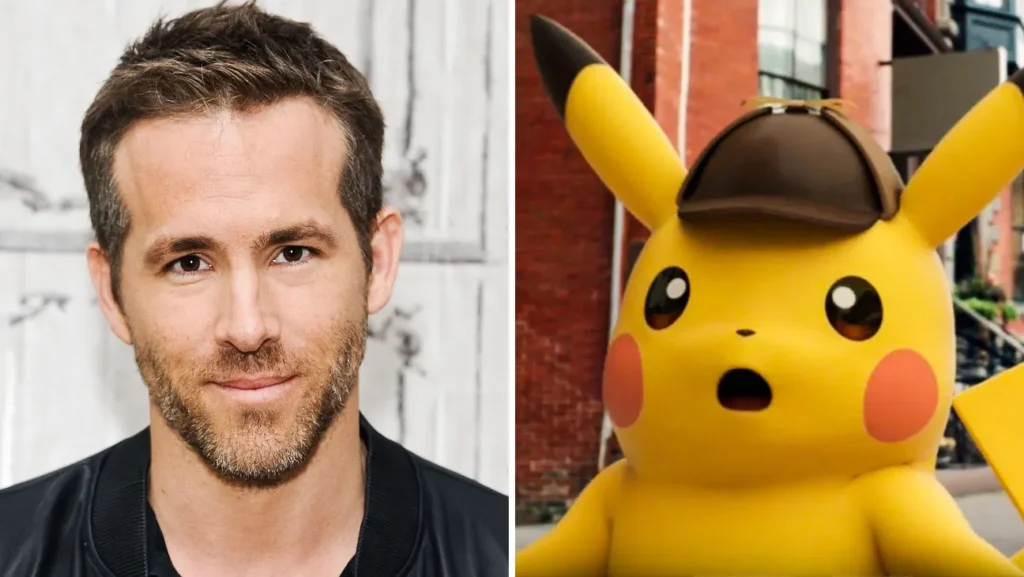
Picture the pitch meeting: “Let’s get Deadpool to voice Pikachu.” Sounds like a fever dream, right? Yet somehow Ryan Reynolds turned a caffeine-addicted yellow detective into pure magic. This wasn’t just stunt casting – this was genius hiding in plain sight.
Reynolds’ Comedic Timing
The jokes hit faster than Pikachu’s thunderbolt. Reynolds’ rapid-fire delivery kept audiences hanging on every “pika pika,” with quips flying so fast you’d miss three while laughing at one. Funny thing is, Reynolds originally wanted to sound like “Who Framed Roger Rabbit had a baby with Blade Runner.” The studio had a simpler idea: “maybe just do Ryan Reynolds.” Smart call. His natural wit brought “an electricity to Pikachu completely missing from the original game.”
Making Pikachu Relatable
Here’s the real surprise – beneath all that fuzzy yellow charm, Reynolds gave us actual depth. Critics couldn’t believe it. Neither could Justice Smith, who somehow managed to build perfect chemistry with a CGI pocket monster. On The Tonight Show, Reynolds put it perfectly – in a world where “the news these days is just like pouring hot lemon juice into your eyeballs,” we needed “just a nice adventure.”
The behind-the-scenes stuff fascinates me. Reynolds sitting there, face covered in motion capture dots, “tethered to something like The Matrix.” All that tech just to make a Pikachu feel real. That’s dedication to the craft, folks.
Breaking the Video Game Movie Curse
Remember when video game movies were Hollywood poison? Detective Pikachu changed everything. Critics called it “the best film ever based on a video game.” Forbes actually praised it as “a good movie first and a promising franchise-starter or a brand cash-in second.” Sure, hearing “Deadpool’s voice come out of the innocent-looking, adorable and oh-so-marketable Pikachu’s body” felt weird at first. But as Parade noted, “he makes you laugh pretty hard right off the bat, so you just go along for the ride.”
Sometimes the craziest ideas work best. Who knew our favourite electric mouse just needed a dose of Reynolds charm to finally break that curse?
Tom Holland as Nathan Drake (Uncharted)

Funny how fate works. After ten years of development hell and a carousel of directors, Uncharted finally found its Nathan Drake in the most unlikely place – Spider-Man’s backyard. Tom Holland swung straight from web-slinging into treasure hunting, and somehow it all clicked.
Younger Take on an Established Character
The original plan? Mark Wahlberg as Drake. But plans change, stories evolve, and suddenly we’re watching a 24-year-old Holland mixing drinks behind a bar before Sully (ironically now played by Wahlberg) drags him into adventure. Smart move, really – instead of copying the games’ grizzled treasure hunter, they gave us something fresh. Holland didn’t just learn his lines – he learned proper bartending at the Chiltern Firehouse. That’s dedication to craft, even if it’s just pouring drinks.
Parkour and Action Sequences
Those Spider-Man flips came in handy. Holland brought that athletic grace to Uncharted’s wild stunts, especially that insane cargo plane sequence straight out of Uncharted 3. The bar fight? Pure Jackie Chan energy, with Holland “inspired by Chan’s use of his surroundings to fight people in unique ways”. Even COVID couldn’t slow him down – he kept training right through those production delays.
Here’s a wild thing – the parkour specialist dropped this gem: “Tom used to train at my gym before he was even Spiderman! It was quite surreal to help him with a small parkour sequence running and jumping the roof tops of Barcelona”. Sometimes the universe just lines things up perfectly.
Chemistry with Mark Wahlberg
Critics couldn’t quite agree on the Holland-Wahlberg dynamic. Some, like Robert Kojder over at Polygon, called out their “weak chemistry”. But Wahlberg saw something different: “Playing opposite Tom was a lot of fun because he’s like an annoying little brother and I never had a little brother, so it was nice. The movie’s that much better because of the chemistry between the two of us”.
Maybe that’s the secret sauce – when your off-screen relationship mirrors your characters’ journey, something authentic sneaks through. Even if critics can’t always spot it.
Cary-Hiroyuki Tagawa as Shang Tsung (Mortal Kombat 1995)
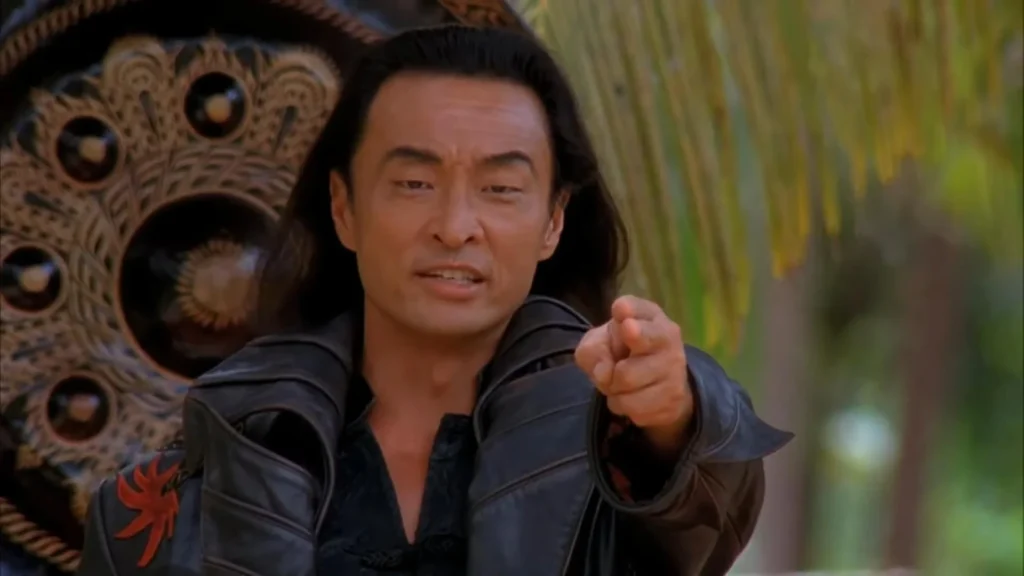
Some performances steal scenes. Cary-Hiroyuki Tagawa’s Shang Tsung? He stole souls – and not just in character. Back in 1995, before Hollywood figured out how to make video game movies work, Tagawa showed them all how it’s done. So perfectly, in fact, that decades later, the games themselves came calling.
Iconic Line Delivery
“Your soul is mine!” Those words still echo through time, sending chills down spines of fans who heard them first in darkened theatres. Every line Tagawa touched turned to gold – “It has begun!” booming through cinema speakers, “Fatality” dripping with menace. The man didn’t just read lines, he savored them like fine wine, letting each syllable breathe with ancient malice.
Embodying the Soul-Stealing Sorcerer
Tagawa didn’t just play Shang Tsung – he became him. Every raised eyebrow, every calculated gesture screamed “thousand-year-old sorcerer who’d steal your soul as soon as look at you.” The beauty of his performance? He clearly loved every wicked second. That joy in villainy made him both terrifying and magnetic. You couldn’t look away, even when you wanted to.
Legacy in Mortal Kombat Media
The magic of Tagawa’s Shang Tsung refused to stay in 1995. Nearly twenty years later, Mortal Kombat: Legacy came calling, asking him to don the sorcerer’s robes once more. Then something unprecedented happened – Mortal Kombat 11 built their entire version of Shang Tsung around him, using his voice, his likeness, even basing the younger version on his 1995 look.
Think about that. An actor’s performance so perfect, so definitive, that the source material reshaped itself to match his interpretation. That’s not just breaking the fourth wall – that’s rewriting reality itself. Quite fitting for a soul-stealing sorcerer, don’t you think?
Joe Taslim as Sub-Zero (Mortal Kombat 2021)
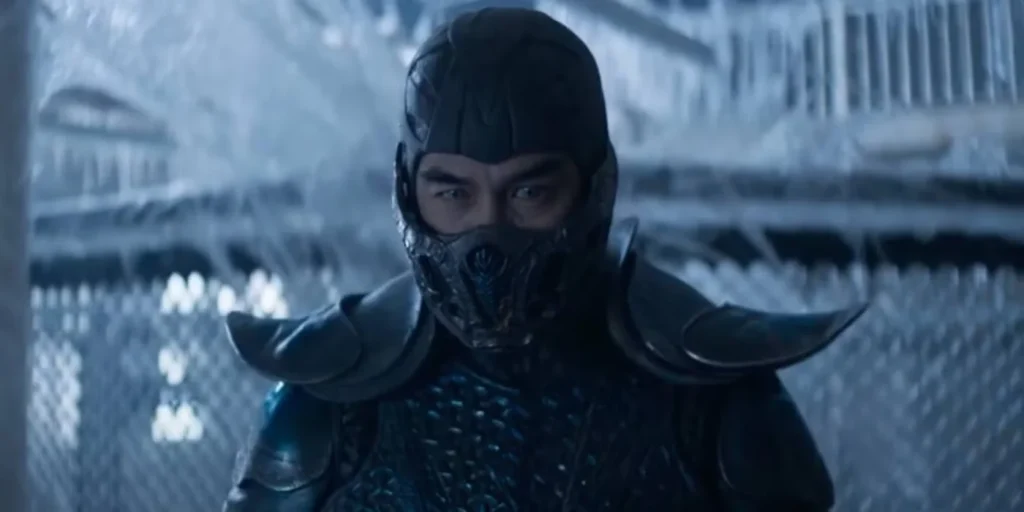
Sometimes casting feels like destiny. When director Simon McQuoid said Joe Taslim was “born to play Sub-Zero,” he wasn’t just hyping his movie. He was predicting something extraordinary. The moment Taslim stepped on set, temperature dropping with every scene, we knew this wasn’t just another fighter in a costume.
Martial Arts Expertise
Let’s talk about Taslim’s resume for a second. Indonesian National Judo team from ’97 to ’09. Gold medals at Southeast Asia Championships. Mastery of Taekwondo, Wushu, and Pencak Silat. This isn’t just a list of achievements – it’s the foundation of something lethal.
Anyone who’s seen The Raid: Redemption knows Taslim moves like lightning wrapped in thunder. Watching him become the Lin Kuei’s deadliest? Pure poetry in motion.
Physical Presence
Here’s what gets me – they had to ask Taslim to slow down during fights. Not speed up, not fake it – slow down. Even Mehcad Brooks couldn’t believe what he was seeing. But listen to how Taslim talks about combat: “When you see a good fight scene, it’s never just a fight scene. It’s drama.” That’s not just an actor speaking. That’s a warrior-philosopher.
Bringing Depth to a Cold-Blooded Assassin
“I wanted to give more soul to him to make him feel more alive,” Taslim explained. Ironic, right? Bringing warmth to gaming’s most infamous ice-wielder. But digging deep into Sub-Zero’s psyche, Taslim found something fascinating – “No one leaves the Lin Kuei.” Those words became his compass, revealing a character bound by duty rather than malice.
The result? A Sub-Zero who freezes your blood while making you understand why. That’s not just good acting – that’s alchemy. Turning ice into gold, one frame at a time.
Raul Julia as M. Bison (Street Fighter)
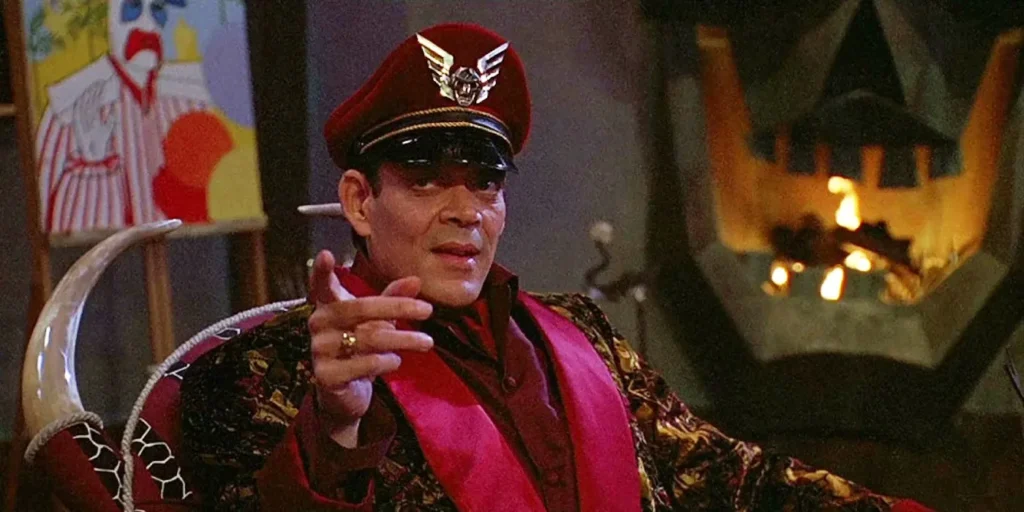
Street Fighter bombed in 1994. Critics tore it apart. Audiences walked away shaking their heads. But something magical happened in that mess – Raul Julia’s M. Bison transcended everything around him. While the movie crumbled, Julia soared.
Julia’s Theatrical Approach
Here’s what breaks my heart – Julia didn’t just play Bison. He studied dictators. Borrowed Mussolini’s gestures, Stalin’s steel, Hitler’s artistic pretensions, Escobar’s slippery charm. Approached Bison like he was tackling Richard III. His own kids, huge Street Fighter fans, helped him research. This wasn’t just another paycheck role. This was Shakespeare in a jumpsuit.
Memorable Quotes and Scenes
That Chun-Li scene? Pure gold. She pours her heart out about revenge, and Bison just… pauses. Then delivers the most devastating line in video game movie history: “For you, the day Bison graced your village was the most important day of your life. But for me, it was Tuesday”.
Watch him stride through his model city, bellowing about “the perfect genetic soldier” and his “Pax Bisonica”. Every word drips with delicious menace. Julia isn’t just chewing the scenery – he’s serving it up as a five-course meal.
Final Performance of a Legendary Actor
The part that gets me? Julia was fighting stomach cancer through every take. His final theatrical role. Yet there he is, giving everything to a movie most actors would sleepwalk through. Earned himself a posthumous Saturn Award nomination. Even The Washington Post had to bow down, calling him “an actor far too skilled for the demands of the evil warlord, but far too professional to give anything less than his best”.
Sometimes greatness shows up in the strangest places. While Street Fighter fades into memory, Julia’s Bison stands eternal – proof that true commitment to craft can turn even the silliest material into something unforgettable.
Jack Black as Bowser (Super Mario Bros. Movie)
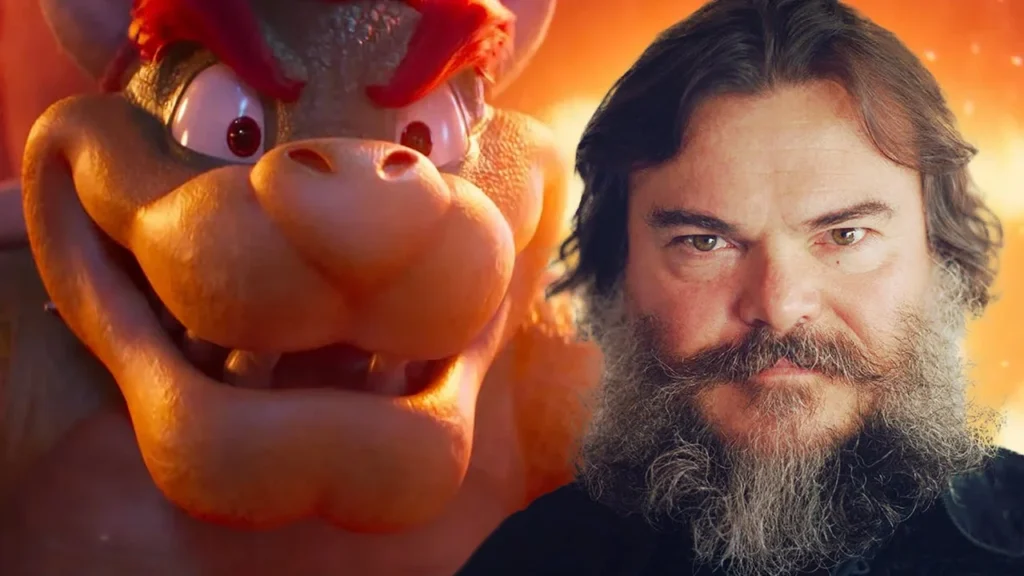
Jack Black didn’t just voice Bowser – he reinvented him. Turned gaming’s most famous fire-breathing turtle into a lovestruck rock star. Sounds crazy, right? That’s exactly why it worked.
Vocal Performance and Singing
“Bowser is this character that I put on. It’s a voice that I had to find. It’s much different than me”. Black wasn’t kidding. That voice earned him an Annie Award nomination for Outstanding Achievement in Voice Acting. But the real magic? “Peaches.” Black wrote and performed this power ballad of unrequited turtle love, and suddenly Bowser had a Billboard Hot 100 hit.
The commitment didn’t stop there. Picture this – Black showing up at a Jonas Brothers concert in full Bowser costume, belting out “Peaches” with those “unbelievably high notes” before dramatically sinking through the stage floor. That’s not promotion. That’s possession.
Humanising the King of the Koopas
The directors wanted something different: “scary, but the other side of Bowser is somebody who’s vulnerable and funny”. Black took that ball and ran with it. Actually, he sang with it – suggesting that love song himself. Suddenly our favourite video game villain had feelings. Real ones. Who knew?
Balance of Menace and Humour
Here’s the truly brilliant part – Black’s Bowser threatens the Mushroom Kingdom one minute, then writes love songs about Peach the next. Watching him unleash his rage on Mario, then crumble when rejected? That’s not just acting. That’s alchemy. Black didn’t just play Bowser – he made us understand him. Feel for him. Root for him, even.
Sometimes the best villains are the ones who make you question whether they’re villains at all. Black’s Bowser? He makes you wonder if he just needed a hug. And maybe some singing lessons.
Anya Taylor-Joy as Princess Peach (Super Mario Bros. Movie)

Princess Peach needed more than saving – she needed reinvention. Anya Taylor-Joy didn’t just give her a voice. She gave her a throne, a sword, and something better than any power-up: agency.
Modernising a Classic Character
“I’d only want to do it if we are moving Peach into her next era,” Taylor-Joy declared. Not just another princess waiting in another castle. No. She wanted “a modern — not only princess, but ruler. She’s really a leader in this. I felt like we could create a more three-dimensional character that had her own agency”.
The script flipped everything – this time Luigi needs the rescue, not Peach. Taylor-Joy loved how this choice “brings a modernity” to the story, raising “different stakes” while making Peach actually matter. Finally, the princess saves herself.
Voice Acting Challenges
Finding Peach’s voice meant breaking free from that high, breathy game voice we all know. Taylor-Joy brought her full range to the booth. “I’m rather fortunate that I do have a big range in the way that I can sound,” she shared.
She built Peach’s voice like a royal wardrobe:
- “Gravitas” for those queen-worthy moments
- Soft, gentle tones when the scene called for grace
- Spontaneous magic during those “open track” sessions
Fan Reception
“I think in 2023 we can give her a few more words than ‘Save me, Mario!'” Taylor-Joy quipped. Her dedication shone through every choice – even showing up to the premiere in a custom pink Dior jumpsuit, a modern Peach brought to life.
The transformation affected Taylor-Joy deeply: “I was kind of taken aback by how much of an emotional impact it had on me to see Princess Peach as this role model of leadership”. Her final thought captures everything: “I am so grateful that a whole generation of kids will grow up thinking this is what a princess is”.
Sometimes the best adaptations don’t just update characters – they set them free.
Walton Goggins as The Ghoul (Fallout TV Series)
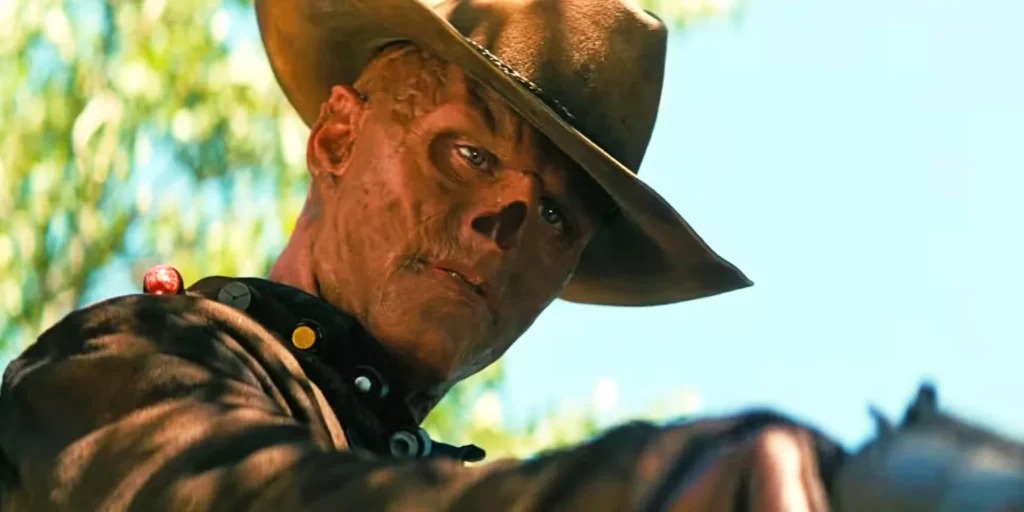
Some roles demand everything from an actor. Walton Goggins’ Ghoul in Amazon’s Fallout? This one demanded his face. His sweat. His humanity. And somehow, through that transformation, he gave us something hauntingly beautiful.
Physical Transformation
Five hours. That’s how long Goggins sat in the makeup chair initially. Even when they got it down to two, that’s still two hours of becoming someone else, watching Westerns for inspiration while they erased his face. The heat nearly broke him – 106°F on day one, prosthetics sealing in every degree until his body started “getting very heavy”.
They didn’t just cover his face – they rebuilt it. Special pieces dotted with markers, his nose vanishing in post-production. Jonathan Nolan made sure those eyes stayed visible though. Because even in the wasteland, even through radiation burns and centuries of survival, we needed to see the soul behind the scars.
Capturing Post-Apocalyptic Menace
Here’s the heartbreaker – before he was The Ghoul, he was Cooper Howard. Movie star. Vault-Tec’s golden boy. Then the bombs fell, radiation reshaped him, and 270 years later, he’s still here. Those yellow vials keeping the feral at bay, keeping him human enough to remember who he was.
Goggins looked to the greats – Eastwood’s Man with No Name. But his own vision? “Kris Kristofferson if he were 250 years old and had been walking the wasteland, and had been drinking all night”. That’s not just character work. That’s poetry.
Bringing Fallout’s World to Life
Sure, he’s ruthless. Has to be. But beneath that leather and radiation, he’s still searching – for Barb, for Janey, for any trace of the family the wasteland stole.
“I don’t believe in playing characters,” Goggins revealed. “I believe it is holding up a mirror to nature and immersing yourself in the world beyond the words”. Sometimes the best performances aren’t about becoming someone else – they’re about finding the truth in impossible places. Even if that place is a nuclear wasteland, and that truth has no nose.
Ella Purnell as Lucy (Fallout TV Series)
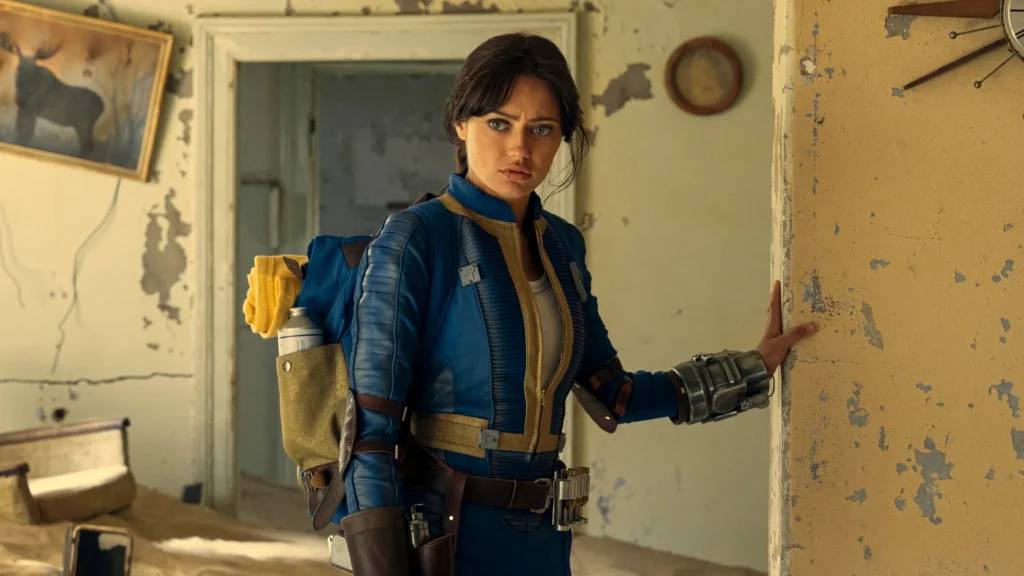
Sunshine doesn’t belong in the wasteland. Yet here’s Lucy MacLean, beaming optimism through nuclear winter like a Vault-Tec advertisement come to life. Ella Purnell didn’t just play Lucy – she showed us innocence shattering in slow motion, a performance that stands out among Ella Purnell’s movies and TV shows. Her portrayal brought a ray of light to the bleak Fallout universe, demonstrating why she’s become a rising star in both film and television.
Portraying Vault Dweller Naivety
Those “big, wide eyes, buoyant and beaming” tell a story all their own. Pure, untouched optimism facing down humanity’s worst mistakes. Landing the role on Valentine’s Day two years before cameras rolled, Purnell saw the challenge instantly: “I was a bit conscious of Lucy coming across as annoyingly optimistic, or her privilege being too unbearable to look at in contrast to the wasteland”.
Most actors might skip the research for a post-apocalyptic show. Not Purnell. She dove into the Fallout games, determined to understand. “I wanted to feel the full weight of what all of this meant”. That dedication shows in every scene – watching an adult woman discover radiation burns and super mutants for the first time feels horrifyingly real.
Character Development
“This is what happens when you break the unbreakable,” Purnell says about Lucy’s final form. Watch her signature “okey-dokey” transform from chipper catchphrase to broken surrender. Each episode strips away another layer of vault-dweller innocence.
The mother scene changes everything. Lucy realises “she has turned into him [The Ghoul]. When she said, ‘I’ll never be you,’ maybe that’s not true”. Purnell describes it perfectly – Lucy’s “mourning a life she’ll never return to”. The vault might still be standing, but that girl from Vault 33? She died in the wasteland.
Physical Performance in the Wasteland
The wasteland didn’t just break Lucy’s spirit – it tested Purnell’s limits. “It was 100 degrees. Walton was sweating, because he was head-to-toe in prosthetics,” she recalls from the Gulper scene. She trained harder than ever before, knowing this role demanded more than anything in her career.
Even the small stuff hurt. That dead finger prosthetic the crew dubbed “poop finger”? Became “the bane of my life”. But that’s the thing about the wasteland – it’s the little discomforts that break you, one radiation-soaked day at a time.
Milla Jovovich as Alice (Resident Evil Series)
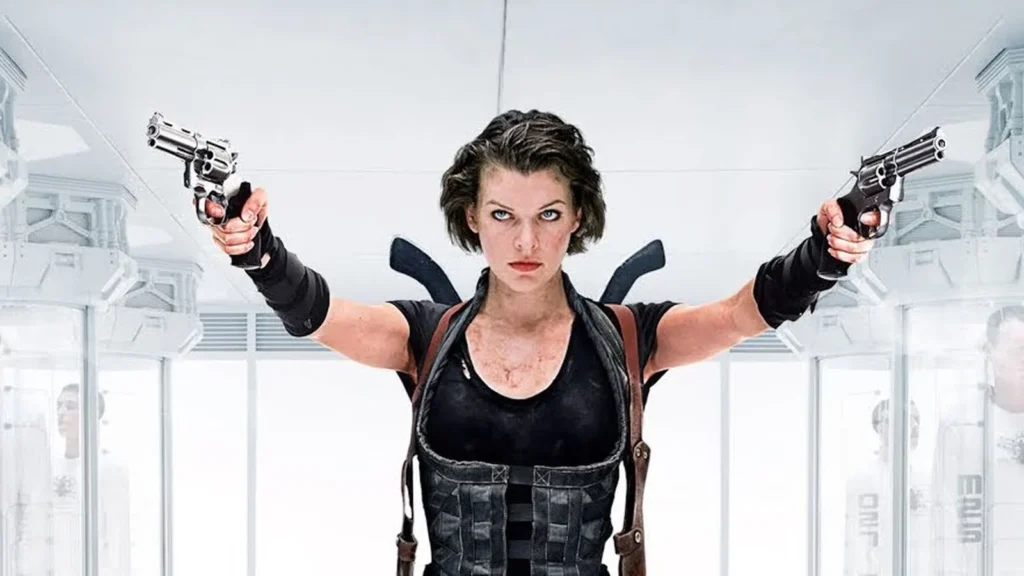
Twenty years. Six movies. One billion dollars. Numbers tell part of the story, but they miss the magic. Milla Jovovich didn’t just lead a franchise – she created something impossible. A character who never existed in the games became the heart of Resident Evil’s cinematic universe.
Creating an Original Character
Alice started as a blank slate – literally. An amnesiac security operative for the Umbrella Corporation, waking up to a nightmare. But across six films, she became something more. The T-virus didn’t just change her body; it transformed her from victim to warrior. While other horror movies trapped their female leads in endless screaming matches with monsters, Alice grabbed a shotgun and wrote her own rules.
Physical Demands of the Role
Nobody handed Jovovich her action star credentials – she earned them one brutal training session at a time. High-intensity cardio, resistance training, martial arts. The kind of commitment that changes your DNA. But that dedication came with real risks. During The Final Chapter in 2015, her stunt double’s motorcycle accident turned catastrophic – ended with an amputation. Sometimes movie magic costs more than anyone expects.
Evolution Across Multiple Films
Fourteen years. That’s how long Jovovich lived in Alice’s skin. Started as a security specialist with missing memories, ended up discovering she was a clone. Watched her powers grow from basic survival skills to full-blown telekinesis thanks to Umbrella’s twisted experiments. By the finale? Full circle – human again, but still fighting. Still refusing to break.
Impact on Video Game Adaptations
Before Alice, female action leads were exceptions. After her? They became the rule. Jovovich didn’t just break barriers – she shattered them, turning Resident Evil into the biggest female-led franchise in film history. $1.2 billion worldwide. Critics might have grumbled, but audiences? They showed up. Again and again.
Sometimes the best video game character never appears in a video game. Sometimes she walks straight out of Hollywood’s imagination and into legend. That’s not just adaptation – that’s alchemy.
Video Game Castings Comparison Table
Let’s break down these performances – see what makes each one tick. From motion capture to method acting, from voice work to physical transformation, here’s how seventeen actors brought our favourite games to life:
| Actor | Character | Project | Notable Character Traits | Key Performance Highlights |
|---|---|---|---|---|
| Jack Black | Bowser | Super Mario Bros. Movie | Menacing yet vulnerable villain | Created unique voice character, wrote/performed “Peaches” song that charted on Billboard Hot 100 |
| Henry Cavill | Geralt of Rivia | The Witcher | Stoic monster hunter | Extensive gaming knowledge of source material, underwent intense physical transformation, performed own stunts |
| Jim Carrey | Dr. Robotnik | Sonic Movies | Over-the-top villain | Balanced menace with humour, compared role to his Riddler performance |
| Idris Elba | Knuckles | Sonic Movies | Intimidating warrior | Experimented with multiple voice variations, captured character’s evolution from adversary to ally |
| Walton Goggins | The Ghoul | Fallout TV Series | 270-year-old bounty hunter | Underwent 5-hour prosthetic applications, inspired by Western anti-heroes |
| Tom Holland | Nathan Drake | Uncharted | Young treasure hunter | Trained as bartender for role, performed parkour sequences |
| Milla Jovovich | Alice | Resident Evil Series | Enhanced superhuman survivor | Performed own stunts, portrayed character across 6 films over 14 years |
| Raul Julia | M. Bison | Street Fighter | Theatrical dictator | Approached role with Shakespearean gravitas, final film performance before death |
| Angelina Jolie | Lara Croft | Tomb Raider | Athletic archeologist | Performed own stunts, physical likeness to game character |
| Pedro Pascal | Joel | The Last of Us | Hardened survivor | Brought emotional depth, performed despite physical limitations (bad knees, hearing loss) |
| Ella Purnell | Lucy | Fallout TV Series | Optimistic vault dweller | Captured character’s evolution from naive optimist to wasteland survivor |
| Bella Ramsey | Ellie | The Last of Us | Resilient teenager | Cut 15 inches of hair, wore chest binder, earned Emmy nomination |
| Ryan Reynolds | Detective Pikachu | Detective Pikachu | Witty detective | Used signature comedic timing, helped break “video game movie curse” |
| Ben Schwartz | Sonic | Sonic Movies | Energetic hero | Brought mile-a-minute excitement, performed with motion capture |
| Cary-Hiroyuki Tagawa | Shang Tsung | Mortal Kombat (1995) | Soul-stealing sorcerer | Delivered iconic lines, reprised role decades later in games |
| Joe Taslim | Sub-Zero | Mortal Kombat (2021) | Lin Kuei assassin | Used martial arts background, performed complex fight choreography |
| Anya Taylor-Joy | Princess Peach | Super Mario Bros. Movie | Modern ruler | Modernized character from damsel to leader, used full vocal range |
Looking at this lineup, patterns emerge. Physical commitment shows up everywhere – from Cavill’s monster-hunting muscles to Ramsey’s dramatic haircut. Voice actors didn’t just read lines; they created whole new personalities. Even the villains got layers – Julia’s Shakespearean Bison, Black’s lovestruck Bowser.
Some transformations went beyond skin-deep. Pascal and Purnell didn’t just play survivors – they lived their characters’ trauma. Jolie and Jovovich redefined what female action heroes could be. And sometimes, like with Tagawa’s Shang Tsung, a performance proves so perfect that even the games reshape themselves to match it.
That’s the magic of perfect casting. It’s not just about looking right or sounding right – it’s about finding that spark that makes pixels and polygons breathe.
FAQs
Q1. What is considered the best video game movie adaptation?
While opinions vary, many critics and fans consider “The Last of Us” TV series to be one of the most successful video game adaptations to date. Its faithful portrayal of the source material, strong performances, and high production values have set a new standard for video game adaptations.
Q2. How important is casting in video game adaptations?
Casting is crucial for video game adaptations. The right actor can bring a beloved character to life, capturing their essence beyond just physical appearance. Examples like Henry Cavill as Geralt in “The Witcher” and Pedro Pascal as Joel in “The Last of Us” show how perfect casting can elevate an adaptation.
Q3. Can actors improve on video game characters in adaptations?
Yes, skilled actors can add depth and nuance to video game characters. For instance, Jack Black’s portrayal of Bowser in “The Super Mario Bros. Movie” brought unexpected vulnerability and humour to the character, while Anya Taylor-Joy modernised Princess Peach as a strong leader.
Q4. What challenges do actors face when portraying video game characters?
Actors often face the challenge of balancing faithfulness to the source material with creating a compelling on-screen presence. They may need to undergo physical transformations, master specific skills, or capture a character’s iconic voice or mannerisms while still making the role their own.
Q5. How has the quality of video game adaptations evolved over time?
Video game adaptations have significantly improved in recent years. Early attempts often struggled to translate games to film, but recent productions have shown greater respect for source material, higher production values, and more thoughtful casting choices. This has led to more critically and commercially successful adaptations.
